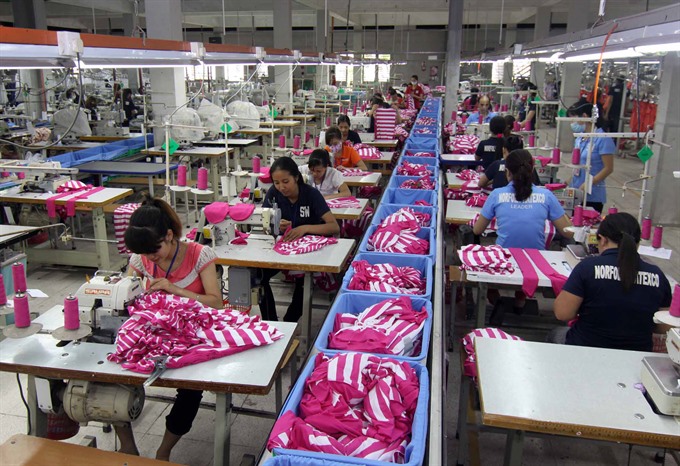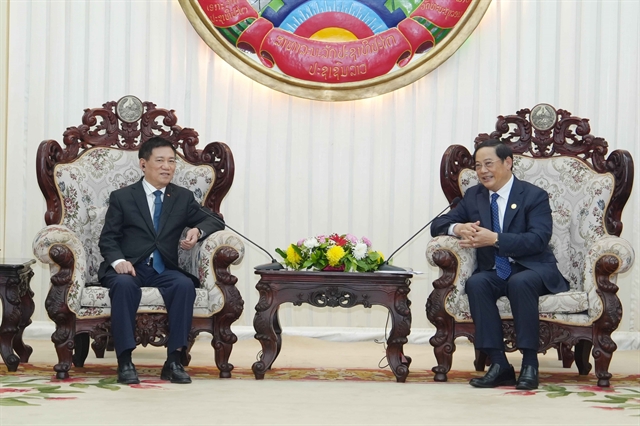 Economy
Economy

Việt Nam is likely to miss an export growth target of 10 per cent that the National Assembly set for 2016, official data has suggested.
 |
| Inside Norfolk JSC factory in Đồng Văn 1 Industrial Zone, northern Hà Nam Province. The 2016 export growth target of 10 per cent set by the National Assembly is unlikely to be achieved. — VNA/VNS Photo Vũ Sinh |
HÀ NỘI – Việt Nam is likely to miss an export growth target of 10 per cent that the National Assembly set for 2016, official data has suggested.
The country’s export values totalled US$159.5 billion in the first 11 months of this year, up 7.5 per cent over the same period last year.
No sudden fluctuation is expected in December’s export value, compared to November’s level of around $15.6 billion. This means the 10 per cent goal is almost unachievable.
Minister of Industry and Trade Trần Tuấn Anh told Government portal chinhphu.vn that the country faced significant obstacles in export activities this year because political instability in some major export markets caused demand and price declines in the outlets.
Agricultural and aquatic products especially suffered from low world prices, with rice exports falling 20 per cent in quantity and 18 per cent in value this year.
A slump of around $1 billion in mineral exports, though in line with a national policy to reduce mineral exports, hindered the general growth.
Fossil coal export was down 45 per cent in quantity and 47 per cent in value, and the rates of decline were 20 per cent and 40 per cent, respectively, for crude oil, in 2016.
Việt Nam Textile and Apparel Association Chairman Vũ Đức Giang said 2016 was the toughest year for the garment and textile sector over the last decade. The sector posted growth of roughly 5 per cent this year, half of the rate recorded in several previous years.
“Garment and textile firms say they have ‘lived from hand to mouth’ in 2016,” he told chinhphu.vn.
Telephone and component exports hit $32 billion this year, after reaching $30.6 billion in 2015 and $23.6 billion in 2014.
However, growth of these exports, which accounted for nearly one-fifth of all export values of the nation, fell to some 10 per cent this year from a peak of 30 per cent recorded some years ago.
Phạm Tất Thắng, a senior advisor from the ministry’s Việt Nam Institute for Trade, said there were bright points in the dim situation.
Some traditional exports witnessed significant growth this year, such as coffee (up 26 per cent), cashew nuts (up 16 per cent) and pepper (up 16 per cent).
Vegetables also increased 30 per cent, confectionery was up 17 per cent, and animal feed rose by 17 per cent.
Trần Thanh Hải, deputy head of the ministry’s Import-Export Department, said while major exporting countries also suffered declines, Việt Nam’s export growth reaching nearly 8 per cent was worth acknowledgement.
“Current export values show that farm produce is consumed well and is benefiting farmers, and more jobs are generated by enterprises involved in industrial production. This is a valuable issue behind the 8 per cent figure,” he told chinhphu.vn.
Hải said Việt Nam could better the export situation next year, taking advantage of its free trade agreement with the European Union, and the Regional Comprehensive Economic Partnership.
He said the country was to restructure export products to promote its competitive edges while trying to expand markets.
“An example, five years ago, no one thought Việt Nam would be a bright point in the technology world or a mobile phone production base. But now we have a reputation in these areas,” he said.
Hải said the country needed to decide which link of the global value chain to take part in to maximise benefits, and this would require the rationalisation of economic sectors and trade policies.
Imports were to be reasonably balanced to meet demand of the economy, support exports, and help processing enterprises better join the global value chain, he added. — VNS




